What is osteitis pubis?
Osteitis pubis describes pain emanating from the pubic symphysis. The pubic symphysis is a small joint at the front of the pelvis in the midline of the body, immediately above the genitals. This joint completes the pelvic ring and is an attachment point for both muscles of the inner thigh and the abdomen. Osteitis pubis occurs when the pubic symphysis joint becomes irritated and inflamed, due to shearing forces. Osteitis pubis is commonly referred to as a bony stress injury and is more common in men partaking in sport and in pregnant ladies.
What are the symptoms of osteitis pubis?
- Sharp pain directly over the pubic symphysis, which can also radiate locally into the groin, inner thigh, stomach and scrotum
- Increased pain with exercise, especially fast twisting sports such as rugby and football
- A sensation of weakness in the abdominal and inner thigh muscles
- Pain with squeezing knees together or when crossing legs
What other injuries can feel like Osteitis pubis?
- Femoroacetabular impingement
- Greater trochanteric pain syndrome
- Hip osteoarthritis
- Iliopsoas tendinopathy/bursitis
- Proximal hamstring tendinopathy
Osteitis pubis vs proximal hamstring tendinopathy
Both osteitis pubis and proximal hamstring tendinopathy are termed as overuse injuries and occur predominantly in a young, active population. However, osteitis pubis is a joint related issue whereas a proximal hamstring tendinopathy describes pain emanating from an injured tendon.
The location of pain between these conditions is very different. Osteitis pubis is felt deeply at the front of the pelvis, and inner groin. This is in contrast to a proximal hamstring tendinopathy where symptoms are felt deep within the lower buttock at the top of the thigh, at the attachment of the hamstring to the ischial tuberosity (sitting bone).
The anatomy
The pubic symphysis is located at the front of the pelvis (see picture below), just in front of the bladder, and attaches the left and the right pelvic bones, closing the pelvis. The pubic symphysis is Greek for ‘growing together’ referring to its ability to rotate allowing the pelvis to increase in size during childbirth.
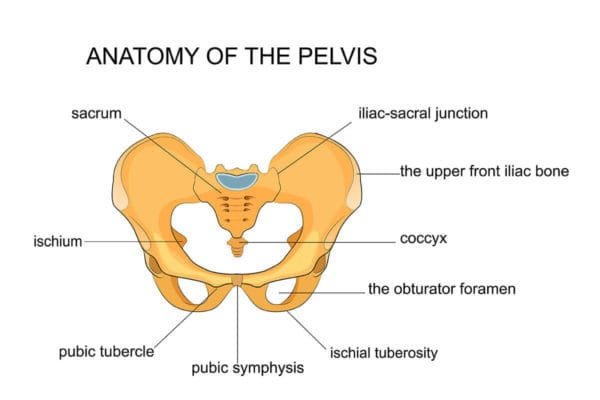
The pubic symphysis is a cartilaginous joint which has at its centre a thick fibrous disc. This reduces shearing forces that pass through the pelvis during activities such as walking, running or multi directional sports such as football.
The pubic symphysis is supported by a series of four thick strong ligaments and is the attachment point for both the rectus abdominis (the 6 pack muscles of the stomach) and the adductor longus (inner thigh muscle) muscles.
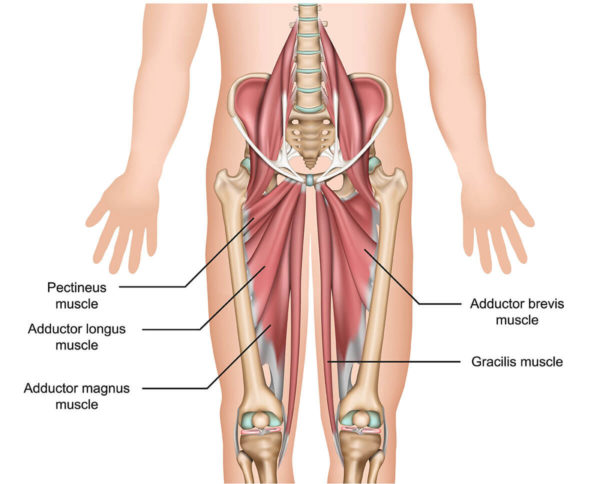
What is Osteitis pubis?
Osteitis pubis of the pubic symphysis is known as a ‘bony stress injury’.
Osteitis pubis is much more common in males than females. To date there are no formal studies available to inform us of the incidence rates of osteitis pubis however, it has been suggested, in one study that of 189 athletes suffering from groin pain, osteitis pubis was present in 20% of cases (Hiti et al,. 2011).
How does Osteitis Pubis occur?
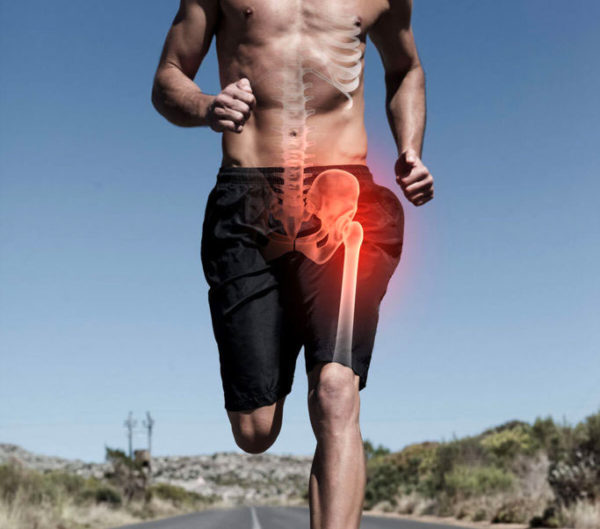
Osteitis Pubis occurs when the pubic symphysis is subjected to prolonged, repetitive abnormal shearing forces. Essentially it is an ‘overload’ or ‘overuse’ injury. The literature surrounding defining what abnormal ‘pressure’ or ‘load’ through the pubic symphysis is, is unclear, however a literature review conducted by Hiti et al,. (2011) recognised the following causative factors;
- A muscular imbalance between the rectus abdominus and the adductor longus muscles may cause an increase in stress throughout the pubic symphysis.
- Hip stiffness – reduced internal rotation (twisting the hip inwards) has been shown to increase shearing pressure through the pubic symphysis.
- Sacroiliac joint asymmetry or instability causes increased movement through the pubic symphysis.
- Osteitis pubis can also occur during pregnancy or childbirth. This topic is not within the scope of this article. For more information concerning this please click this link.
What are the symptoms of Osteitis Pubis?
Symptoms of Osteitis Pubis are often gradual and slow to develop. They often build from intermittent and tolerable symptoms to a constant pain that hinders your walking and stops you from exercising or playing sport. Symptoms often include;
- A sharp pain felt over the pubic symphysis during activity which can cause you to limp particularly the day after sport or activity
- Pain felt directly over the pubic symphysis. This can radiate into the groin, the inner thigh, the lower stomach or scrotum.
- Pain is made worse with activities such as running, but also in sports that involve rapid change of direction i.e. cutting and twisting, such as football and rugby.
- You may feel a weakness in your abdominals or the muscles surrounding the hip.
- Pain is common with crossing your legs or squeezing your knees together.
How is Osteitis Pubis diagnosed?
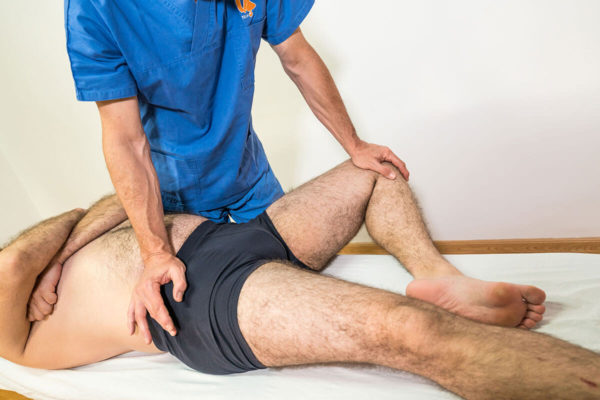
It is vital that a correct diagnosis be made in order for you to be treated quickly and effectively. Osteitis Pubis can occur independently or can present as part of a mixture of symptoms alongside other issues. There are many other pathologies that can present as Athletic Osteitis Pubis. These need to be assessed to avoid a misdiagnosis. Hiti et al,. (2011) and Angoules., (2015) have observed the following differential diagnoses as;
- Stress fracture.
- Inguinal hernia.
- Hip joint pathologies such as osteoarthritis
- Femoroacetabular impingement
- Adductor tendinopathy.
- Psoas tendinopathy
- Lumbar spine pathology such as disc disease.
- Osteomyelitis
Your clinician will evaluate your condition by asking you a series of medical questions and undertaking a set of movements and clinical tests. This might lead them to suspect you are suffering from osteitis pubis however, a diagnosis of osteitis pubis can only be confirmed using diagnostic imaging, with both MRI and X-ray being of particular use (Angoules., 2015). If your clinician believes you could have an osteitis pubis they can refer you directly you for a scan.
How do we treat Osteitis Pubis?
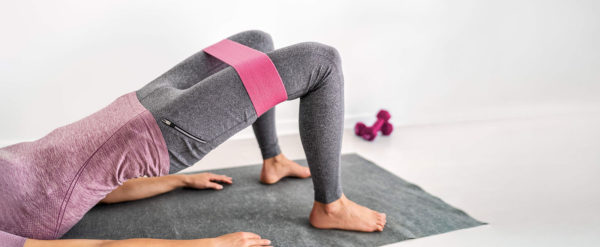
Osteitis pubis is generally self-limiting and often resolves with a period of rest and a progressive rehabilitation program under the supervision of a physiotherapist.
Your clinician assess you for any muscular imbalances, weaknesses or tightness that could lead to osteitis pubis. These will be addressed by prescribing a set of specific exercises.
Here are a few tips and tricks you might like to try if you think you are suffering with an osteitis pubis;
- Take a few weeks off! A period of rest from aggravating movements tasks such as running, kicking and fast turning will help to settle your symptoms.
- Try taking some over the counter medication such as non-steroidal anti-inflammatories. Ask your pharmacist before starting any medications.
- Try some gentle stretches for the muscles surrounding your hip including your hip flexors and gluteals.
- Don’t cross you legs! This can irritate your symptoms.
- Try not to stand asymmetrically! Shifting your weight to one side could increase the pressure on your pubic symphysis.
- Try sleeping with a pillow between your legs as this can reduce the compressive pressure of your pubic symphysis.
What if conservative management does not work?
Ultrasound guided injection therapy
It is uncommon for osteitis pubis not to settle with a period of rest and a course of physiotherapy however, if you are struggling to resolve your symptoms, having difficulty in managing your daily activities or unable to return to exercise then an ultrasound guided steroid injection may be required.
An diagnostic ultrasound scan will be carried out on your first session used to visualise the pubic symphysis. Once the target has been located a dose of steroid (powerful anti-inflammatory medication) is mixed with a local anaesthetic and delivered directly to the pubic symphysis.
Research has shown ultrasound guided steroid injection to be more accurate and more effective than unguided injections). When injecting steroid into a delicate area such as the pubic symphysis the accuracy gained via ultrasound guidance is invaluable.
Angoules., (2015) discusses a series of between 1 to 3 injections may be needed to treat this condition, At Complete an injection is not a stand-alone treatment!. An ultrasound guided steroid injection is used to reduce the pain and inflammation associated with osteitis pubis. It essentially provides a painfree window of opportunity to engage in a comprehensive rehabilitation programme under the supervision and care of a physiotherapist to ensure the best possible outcome.
Ultrasound guided osteitis pubis injections are carried out by Dr Lorenzo Masci, who is a Sports Medicine Consultant who works at our Chelsea location. Our unique, one stop clinic means you do not need a referral from your GP. You can simply refer yourself directly to the clinic.
If you would like to book an appointment or would like more information before booking please call 020 7482 3875 or email info@complete-physio.co.uk

